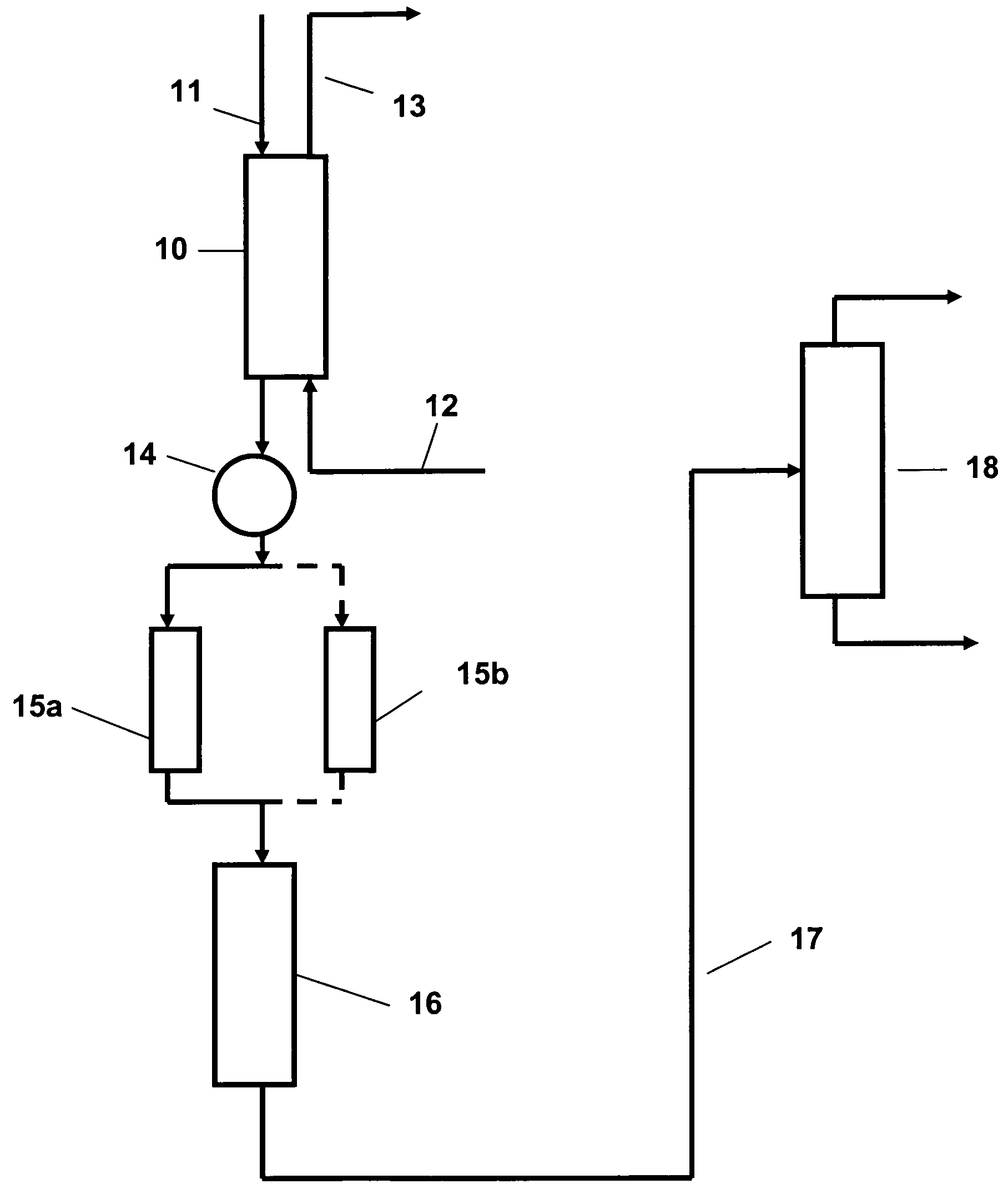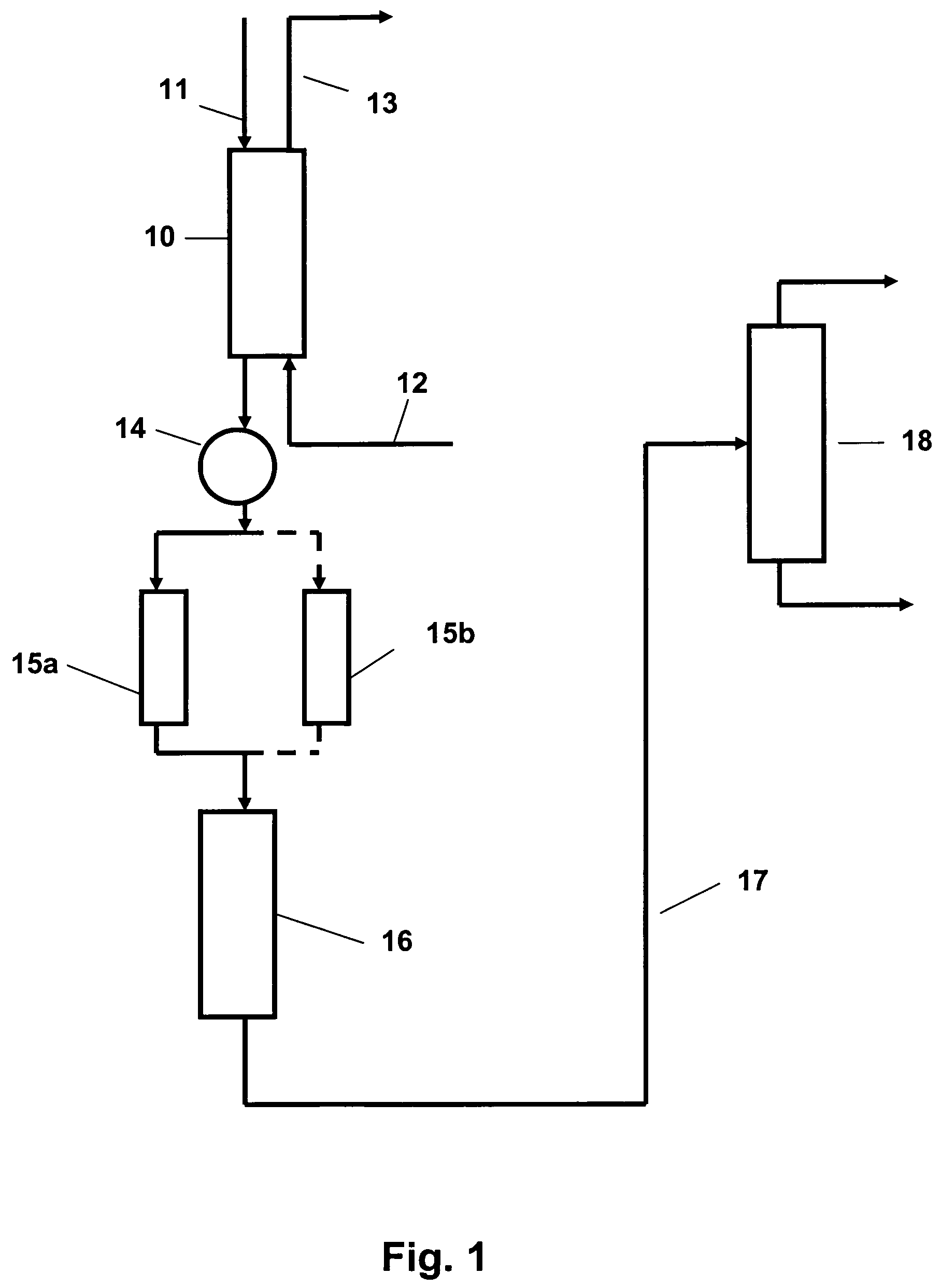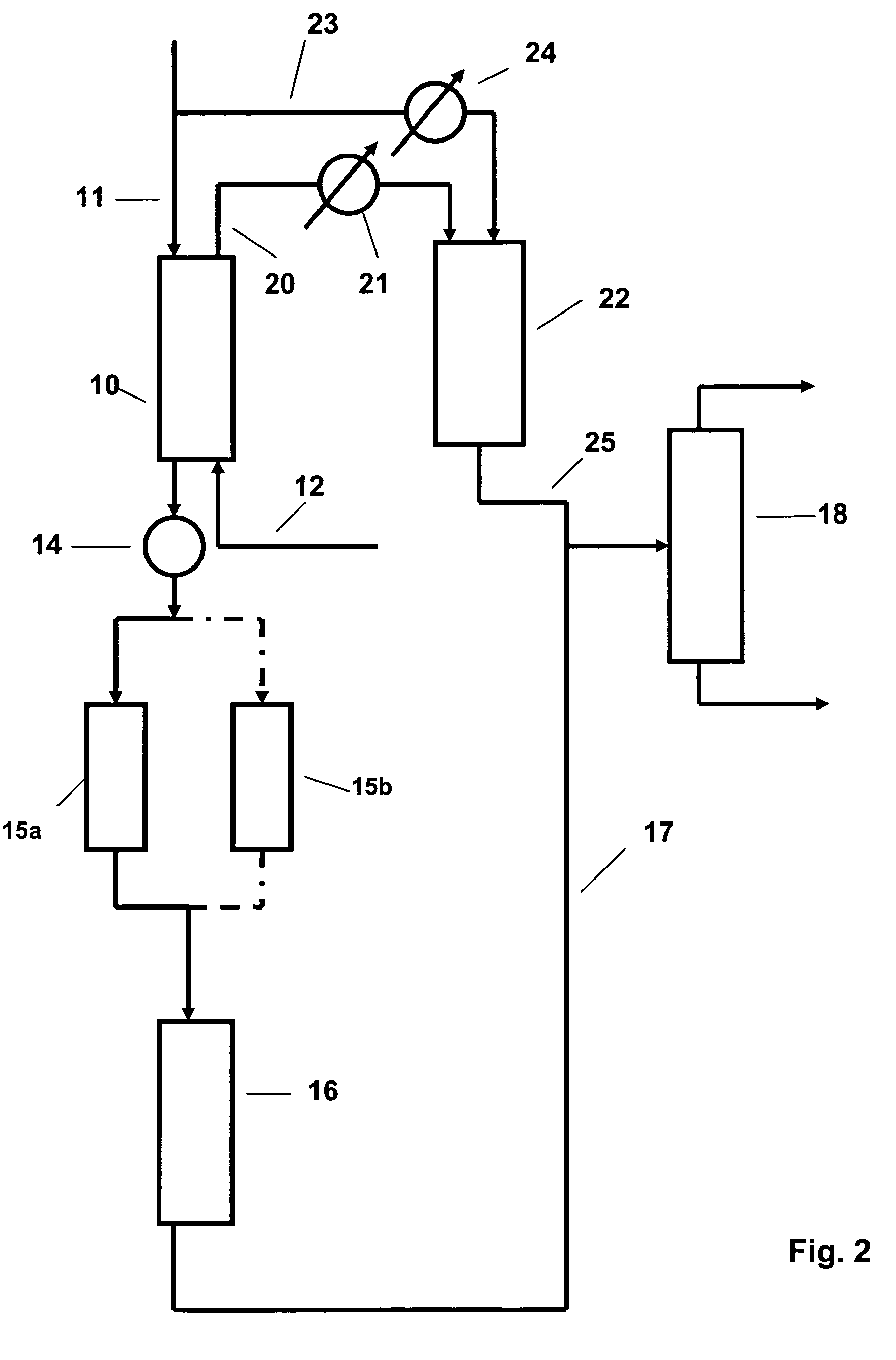Liquid phase aromatics alkylation process
a technology of aromatics and alkylation process, which is applied in the direction of organic chemistry, hydrocarbon oil treatment products, fuels, etc., can solve the problems of loss of products, difficulty in meeting the benzene specification of refineries without petrochemical capability, and the amount of benzene which is permissible in petroleum motor fuels, etc., and achieves good utilization of both ethylene and ethylene.
- Summary
- Abstract
- Description
- Claims
- Application Information
AI Technical Summary
Benefits of technology
Problems solved by technology
Method used
Image
Examples
Embodiment Construction
[0023]A schematic for an olefin alkylation unit is shown in simplified from in FIG. 1. A stream of off-gases from the fluid catalytic cracking unit (FCCU) including light mixed olefins. typically C2 and C3 olefins (ethylene and propylene) with some C4 olefins and paraffins as well as light paraffins (methane, ethane, propane) Is led into absorber 10 through line 11; a light aromatic stream containing benzene also enters absorber 10 through line 12. In the absorber, the liquid aromatic stream sorts the olefins selectively from the FCC off-gases. The components in the FCC off-gases which are not sorbed by the aromatic stream, mainly the light paraffins methane, ethane, propane and butane pass out of the absorber through line 13 and can used as refinery fuel gas. The mixed olefin / benzene Charge passes to heater 14 to guard bed reactor 15a The guard bed may be operated on the swing cycle with two beds, 15a,15b,one bed being used on stream for contaminant removal and...
PUM
| Property | Measurement | Unit |
|---|---|---|
| pressure | aaaaa | aaaaa |
| temperature | aaaaa | aaaaa |
| temperature | aaaaa | aaaaa |
Abstract
Description
Claims
Application Information
 Login to View More
Login to View More - R&D
- Intellectual Property
- Life Sciences
- Materials
- Tech Scout
- Unparalleled Data Quality
- Higher Quality Content
- 60% Fewer Hallucinations
Browse by: Latest US Patents, China's latest patents, Technical Efficacy Thesaurus, Application Domain, Technology Topic, Popular Technical Reports.
© 2025 PatSnap. All rights reserved.Legal|Privacy policy|Modern Slavery Act Transparency Statement|Sitemap|About US| Contact US: help@patsnap.com



